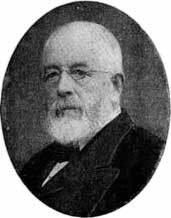How to cite this page Comment citer cette page
Tate, Henry
Person
- Media metadata | Métadonnées multimédias
- has biography | a une biographie
-
English sugar merchant and philanthropist in the nineteenth century, who established the Tate Gallery in London.
The connections between Tate, slavery, and colonialism in the nineteenth century are complex. As Legacies of British Slavery have argued, there were three indirect but fundamental connections between the Tate sugar firm, the Tate art collection, and empire. Firstly, the sugar industry of the nineteenth century was built upon the foundations of the transatlantic slave economy of the seventeenth and eighteenth century. Secondly, British sugar continued to be sourced principally from the Caribbean and South America after abolition. It is not yet clear the extent to which the Tate firm may have also sourced raw sugar from the slave states of Brazil and Cuba during this period. Thirdly, many of the items in the Tate art collection have their own connections to transatlantic slavery and colonialism. These include, for instance, Joshua Reynolds’s painting The Infant Samuel (1776), which was bequeathed by Charles Long, Lord Farnborough, as well as The Banished Lord (1777), which was presented by Rev. William Long. - was born | est né
- 11 March 1819
- died in | est mort par
- 5 December 1899
- has nationality | a la nationalité
- United Kingdom of Great Britain and Ireland
- has type | est de type
- depicted
- has association with | a une association avec
-
 Tate
Tate


